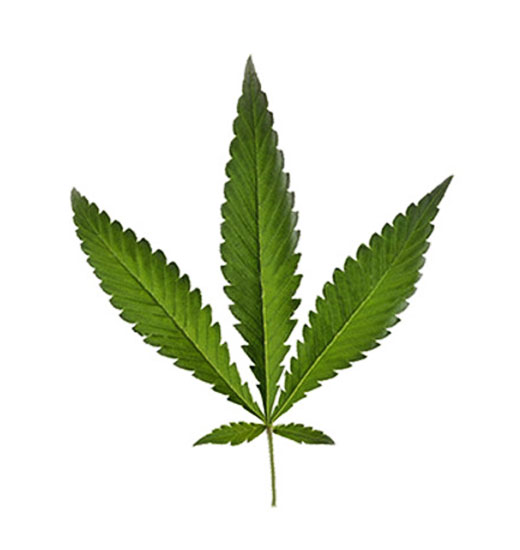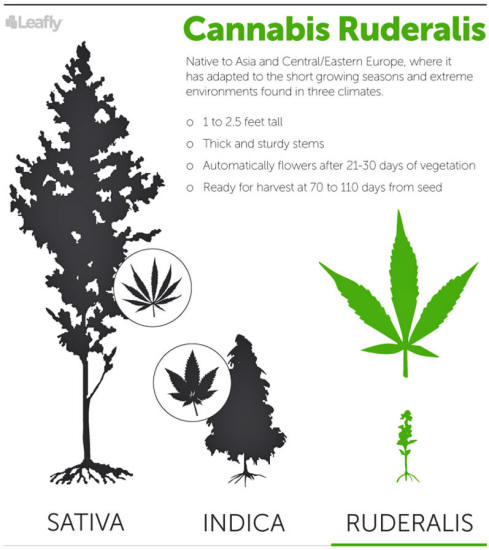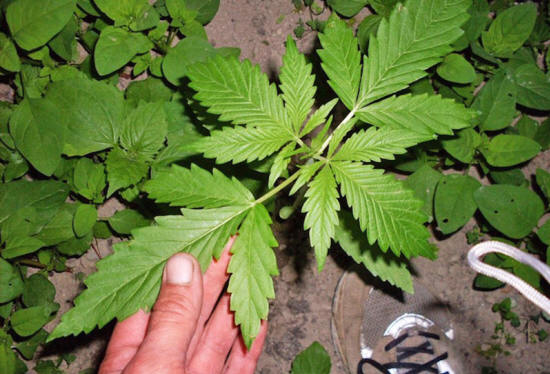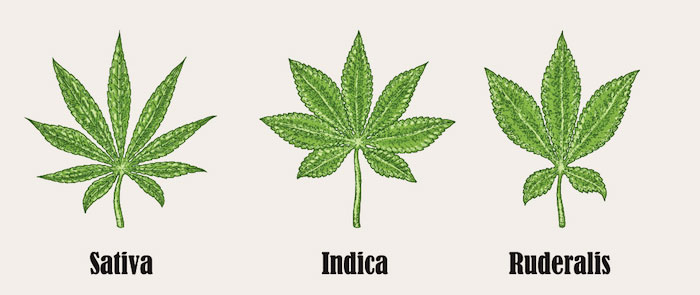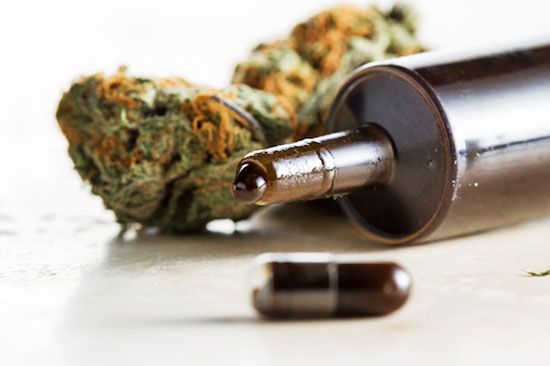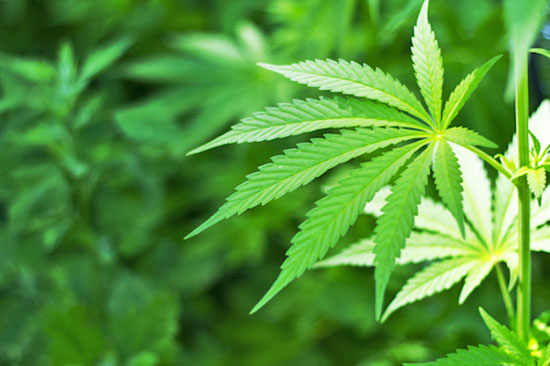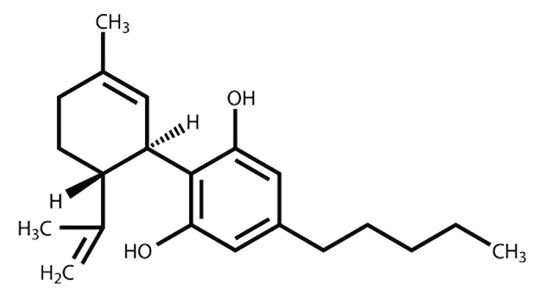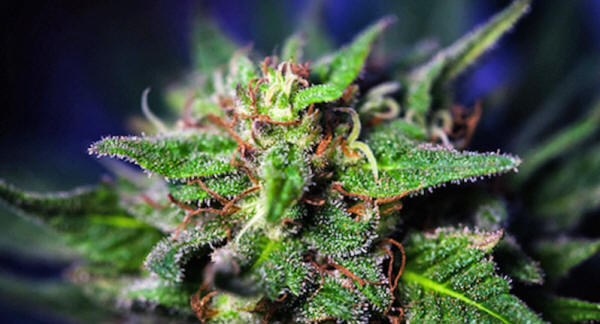|
Native to Russia and
Eastern Europe, ruderalis is different in a number of ways, most
notably in that it has very low THC content, and is therefore not
psychoactive, making it less sought after for those seeking to
elevate their consciousness.
The name itself,
ruderalis, stems from a Latin word, rūdera, meaning rubbish,
or debris, offering insight into its characteristics.
Ruderalis may have very beneficial uses when bred as a strain of industrial hemp, making it useful as an industrial crop.
Regarding CBD, ruderalis is rich in this active cannabinoid which is now being widely recognized for its non-psychoactive medical properties which are highly beneficial in reducing inflammation, managing pain, and are believed to very potent anti-cancer agents.
Ruderalis is commonly used by cannabis breeders to enhance the properties of sativa and indica strains, most notably because ruderalis is auto-flowering, meaning that it's flowering cycle is not triggered by the photoperiod like indica and sativa.
It typically begins to flower between 21 and 30 days after the seed has been planted, and popular strains commonly referred to as 'auto-flowering' strains are typically crossbred with ruderalis.
While some debate continues as to whether or not ruderalis is a subspecies rather than a stand alone species of cannabis, the plant is quite unique, and a true weed.
- The Cat's Out of the Bag
with this Cure-All - June 17, 2016 from Freedom-Articles Website
With a slew of impressive medical benefits, CBD (cannabidiol), the main non-psychoactive cannabinoid in cannabis, holds massive potential as an extraordinary healer.
It appears there is little it cannot heal …
The truth about Cannabidiol (CBD) and the cannabis plant in general can no longer be suppressed - and the exciting thing is that we are just at the beginning.
We are literally just at the start on the long road of cannabis knowledge, which will take us to a deeper understanding of this astonishing plant, its varied uses and its manifold medical benefits.
We still don't even know how many cannabinoids (natural chemical compounds endemic to the cannabis plant) it contains - over the years the number has been revised in various places from 66 to 85 to 113+.
We certainly don't know the full range of effects of these cannabinoids, nor do we understand the synergistic way they work together, which is of the utmost importance.
However, we do know enough to say that one of the foremost cannabinoids is cannabidiol or CBD, and we do know that it has incredible potential for healing a wide range of diseases, including,
Ironically, the whole propaganda campaign of "reefer madness" that tried to demonize marijuana in the 1930s-1950s insinuated that pot caused schizophrenia, and while THC can have some mildly negative psychoactive effects when smoked, it may turn out that CBD-rich cannabis oil cures schizophrenia, not causes it.
This demonization campaign, as usual, was led
by the Rockefellers
and other rich NWO families who were scared that cannabis would
destroy their monopolies, such as the Western
medical drug industry.
This article focuses on the healing potential of the preeminent cannabinoid, CBD.
They're also found somewhere closer to home: you!
That's right:
It is known as the endocannabinoid system ("endo" is from a Greek word meaning "within").
In this way, we can distinguish among endocannabinoids (those produced by the human body), phytocannabinoids (those produced by the cannabis plant) and synthetic cannabinoids (the approximately 17 synthetic versions produced by the pharmaceutical cartel).
Synthetic cannabinoids, by the way, are Big Pharma's way of trying to pirate and cash in on Nature by modifying or isolating a natural chemical or compound, making it slightly different to its natural state, getting a patent, then marketing it as a drug with a governmentally enforced monopoly.
Some synthetic
cannabinoids (such as K2, spice, marinol, etc.) have been taken off
the market due to their
dangerous nature, but after all, they are part of
the Big Pharma business plan, and the greater
New World Order synthetic agenda, so what do you expect?
Cannabidiol or CBD is the main non-psychoactive constituent of the cannabis plant.
The Endocannabinoid System
The cannabinoid receptors (CB1, CB2, etc.), endocannabinoids and the related enzymes all make up the endocannabinoid system - and it's not just some insignificant little system in the body.
Evidence shows it to be essential in most if not all physiological systems, responsible for numerous processes including appetite, pain-sensation, mood, memory and immunity (yes, the endocannabinoid system influences the immune system too).
The Italian researcher, Vincenzo Di Marzo, summed it up well in his 1998 study 'Endocannabinoids - Endogenous cannabinoid receptor ligands with neuromodulatory action':
The chemical formula for cannabidiol or CBD.
How CBD Works
CBD is a miracle compound.
Unlike THC, it does not bind to the body's cannabinoid receptors (CB1 or CB2), so it is not psychoactive and does not produce the high effect. Cannabidiol works through a number of complex mechanisms.
Preclinical studies indicate that cannabidiol has the following list of extensive healing properties.
The first 5 items on the list below all pertain to cannabidiol's capacity as an anti-carcinogenic agent:
A close-up view of the cannabis plant, which naturally produces cannabidiol or CBD.
How Cannabis Kills Cancer Cells
For those wanting a little more information on how cannabis kills cancer cells, I recommend watching a few of these short videos.
Dennis reveals how our bodies make cancer cells all the time, but our immune system (which includes the endocannabinoid system) can normally handle them.
However, when the immune system is compromised, it gets behind on killing cancer cells.
Cancer cells have distorted or damaged DNA. Luckily, when a cell turns cancerous, the number of cannabinoid receptors in the cell increases.
The body uses its endocannabinoid anandamide to stimulate the production of ceramide, which kills cancer cell mitochondria, starving the cancer cell.
The ceramide is intelligently guided; it somehow "knows" to kill damaged cells only and leave the healthy ones intact, much like the way vitamin B17 (aka amygdalin or laetrile) works to selectively target cancer cells too.
The Future of CBD Oil - Made Without Solvents
Rick Simpson, the Canadian hero who made CBD-rich cannabis oil, gave it away for free and healed many people, came up with a form of CBD oil where he used a solvent to extract it.
However, there are now many companies who are producing high-quality CBD oil from non-GMO, non-pesticided hemp, which they then decarboxylate (turn the acidic forms of the cannabinoids into the non-acidic forms, i.e. turn CBDa into CBD and THCa into THC, etc.)
I believe in the future, due to the unstoppable momentum of cannabis oil, medical marijuana will become completely decriminalized and legalized, and people all over will have access to high therapeutic grade CBD oil which contains no THC or psychoactive agents.
Conclusion - Let's Explore the Many Uses of Cannabis and CBD Oil
There are no coincidences in our world - only magic, mystery, synchronicity, conspiracy and connection of which we are often unaware.
The sheer fact that our body has its own endocannabinoid system, parallel to the phytocannabinoid system of the cannabis plant, is a fact of key significance and beyond mere coincidence.
Call it what you want - cannabis, hemp, marijuana, pot, weed, ganja or kush - this plant has massive potential as a first-class healer extraordinaire.
It's time for all of us around the world to study and use this plant for the bounty of benefits it offers, including making,
...as well as for its nutritional benefits (hemp seed, hemp seed oil) and medical benefits (CBD oil).
It has already saved people's lives.
Imagine what else it can do…
Sources
|


